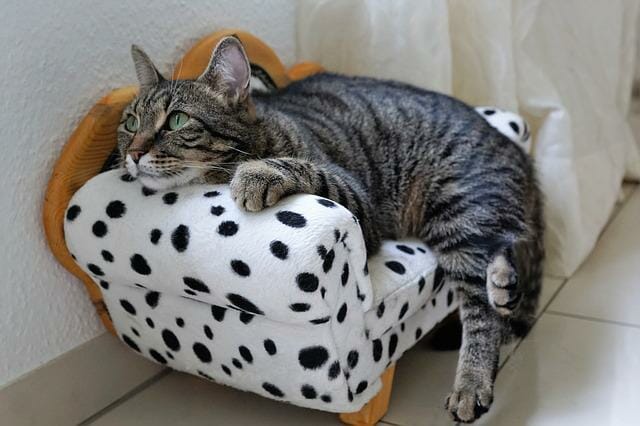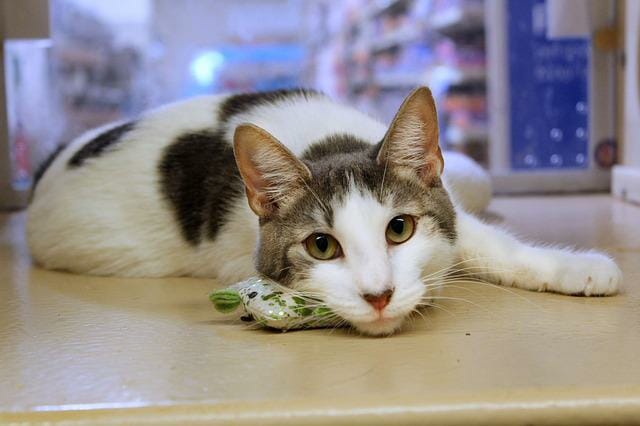Can a Cat Have Autism: Analyzing Cat’s Special Needs
No, cats can exhibit some behaviors similar to those seen in humans with autism, such as repetitive behaviors, difficulty with social interaction, and sensitivity to sensory stimuli; there is no clear evidence that cats can have autism in the same way that humans do. Instead, cats have their own unique set of behaviors and ways of communicating that are specific to their species.


Table of Contents
Cat’s Special Needs
Blindness
Blindness in cats can occur for a variety of reasons, including genetics, illness, injury, or age-related degeneration. Some cats are born blind, while others may develop blindness later in life.
Signs that your cat may be experiencing blindness include bumping into objects, being hesitant to explore new areas, increased vocalization, or changes in their behavior or mood. If you suspect your cat may be blind, it is important to have them evaluated by a veterinarian.
Cats with blindness can still lead happy and fulfilling lives, but they may require adjustments to their living environment to help them navigate and feel safe. Some things you can do to care for a blind cat include:
- Keep their living environment consistent and predictable to help them develop a mental map of their surroundings.
- Provide plenty of auditory cues, such as toys that make noise or a radio playing in the background, to help them navigate their environment.
- Use scents to help them identify important areas, such as their food and water bowls or litter box.
- Avoid moving furniture or objects around their living environment, which can cause confusion and anxiety.
- Consider using a harness and leash to take your cat outside and help them explore in a safe and controlled way.
Deafness
Deafness in cats can occur for various reasons, such as genetics, according to MSD Veterinary Manual. It may also be age-related degeneration, certain medications, injury, or illness. Some cats may be born deaf, while others may develop hearing loss.
Signs that your cat may be experiencing hearing loss include not responding to sounds, sleeping more soundly than usual, being startled more easily, and becoming more vocal. If you suspect your cat may be deaf, it is important to have them evaluated by a veterinarian.
Cats with deafness can still lead happy and fulfilling lives, but they may require adjustments to their living environment to help them navigate and feel safe. Some things you can do to help a deaf cat include:
- Use visual cues such as hand signals or flashing lights to communicate with your cat.
- Place a vibrating collar on your cat to get its attention.
- Provide plenty of visual stimuli, such as toys that light up or move or windows that allow them to watch birds or squirrels outside.
- Consider using a collar with a bell or other noisemaker to help locate your cat if they wander off.
- Keep your cat indoors to help protect them from potential dangers, as it won’t be able to hear approaching cars, dogs, or other threats.
Mobility Issues
Cat mobility issues can arise for various reasons, such as arthritis, obesity, age-related degeneration, injury, or illness. Some signs that your cat may be experiencing mobility issues include difficulty getting up or down, limping, stiffness, reluctance to climb or jump, and decreased activity levels.


If you suspect your cat is experiencing mobility issues, it is important to have them evaluated by a veterinarian. For example, the vet may perform a physical examination and recommend diagnostic tests such as x-rays or blood work to determine the underlying cause of the mobility issue.
Depending on the underlying cause, there are a few things that you can do to help your cat manage their mobility issues. These may include:
- They are adjusting their living environment to make it easier to move around, such as providing ramps or steps to help them climb onto furniture or into the litter box.
- Providing a comfortable and supportive bed that is easy for them to get in and out of.
- Encouraging low-impact exercises such as gentle play or short walks to help maintain muscle tone and flexibility.
- Adjusting their diet to help manage any underlying conditions such as obesity or joint problems.
- Providing pain relief medication or supplements to help manage any discomfort associated with mobility issues.
Reasons Why Cats Act Autistic
Repetitive Behaviors
Repetitive behaviors are not uncommon in cats, and they can serve different purposes for the cat. For example, grooming is a repetitive behavior essential for maintaining a cat’s cleanliness and hygiene. However, excessive grooming can indicate stress, anxiety, or medical conditions such as skin allergies or parasites.
Other repetitive behaviors that cats may exhibit include pacing, circling, and pawing at the same spot on the ground. These behaviors may result from boredom, stress, or anxiety, and it’s important to identify the underlying cause to prevent them from becoming a problem for the cat.
In some cases, repetitive behaviors can become compulsive and interfere with the cat’s normal daily activities. This is known as a feline compulsive disorder, and it’s important to consult with a veterinarian or a veterinary behaviorist if you suspect your cat may be experiencing this condition.
Avoiding Social Interaction
Cats are often known for their independent nature, but some cats may exhibit behavior that avoids social interaction more than usual. This can be a sign of a few things; some cats may be afraid of people or other animals and avoid social interaction to cope with this fear.
Cats that have yet to be properly socialized with people or other animals may need to learn how to interact in a social setting and may avoid it altogether. Also, cats that are in pain or discomfort may avoid social interaction as a way to cope with their condition.
If your cat is avoiding social interaction, observing its behavior and trying to identify the underlying cause is important. For example, taking your cat to the vet for a check-up is important if you suspect a medical issue. However, if you suspect stress or anxiety, you can try to create a more comfortable and safe environment for your cat and consider consulting with a veterinarian or a veterinary behaviorist for further advice.
Sensory Sensitivities


Cats may also have sensory sensitivities, which can manifest in a few different ways; some cats may become overstimulated by certain sounds, sights, or sensations and react with aggression, fear, or avoidance.
Cats may be hypersensitive to certain textures, smells, or tastes and refuse to eat or use litter boxes with certain textures or smells. In addition, some cats may have difficulty processing sensory information, leading to difficulty with coordination, balance, and other physical activities.
Observing its behavior and identifying the underlying cause is important if your cat shows sensory sensitivities. Providing a comfortable and safe environment for your cat can help reduce stress and anxiety. Consulting with a veterinarian or a veterinary behaviorist can also help identify the cause of your cat’s sensory sensitivities and develop a treatment plan.
